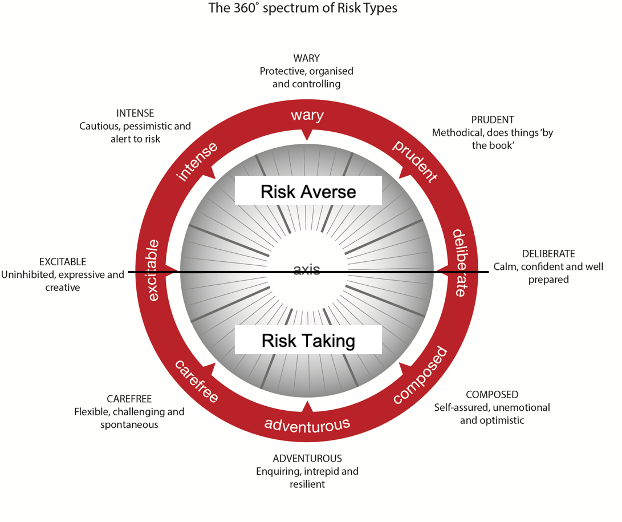by Louisa Bülow
Change is no longer what it was pre-pandemic. Now, it is not just a case of finding the best way to evolve your ‘normal’ business practices, but an essential condition for survival in this new and uncertain work environment. As there are no tried and tested models to follow in a post-lockdown world, it is vital to understand how your employees will react to change events that are often ambiguous, unpredictable, stressful and risky. Knowing where possible resistance to change is likely to lie and managing this effectively will improve employee wellbeing and support business strategy.
Here, we discover how the Risk Type Compass (RTC) can help you identify employees likely to need more support, as well as give you three key pieces of advice to support your employees through uncertainty.
There is no change without risk
Barack Obama
Resistance to change and the Risk Type Compass:
The RTC, with its focus on human nature, is able to identify subjective risk and how your employees are likely to react to organisational change.
Subjective risk has a powerful influence on decision-making. The Risk Type Compass personality assessment is able to measure subjective risk through looking at Risk Type (stable and at our core) and risk attitude (varies when exposed to different situations and events). Where some individuals will embrace change and be happy to ‘go with the flow’ – others will be fearful of it, feeling anxious and tense as a result of a lack control. The RTC places individuals in one of 8 distinctive Risk Types with an aim to accurately reflect the individual’s unique predisposition towards risk.
In terms of resistance to change, we can simplify the eight Risk Types into two categories; those that are more risk-averse, that is, they are aware of risk and act to prevent its occurrence, and those that are more risk-taking. The risk-takers are more spontaneous, they do not fear risk, in fact, they can seem almost drawn to risk. These risk-takers are more likely to embrace change as they are not perturbed by the unexpected.

PCL’s recent research has demonstrated that the Risk Types that fall to the top of the compass (risk-averse individuals) are more likely to be resistant to change. They are more risk-averse and the lack of control and uncertainty that organisational change poses can knock them off balance, meaning that they fear risk and tend to be uncomfortable at the prospect of change.
Three ways to manage organisational change effectively:
Let them know as you go
Be sure to know what you are dealing with. People who are likely to resist change will want the facts, ALL of the facts. It’s important to not throw these at them all at once – take a step by step approach and introduce these at a sensible time in the change process. Risk-averse individuals will not want a situation of information overload as this will only lead to more questioning and rumination. They need to know what the change is so that they can have the time to evaluate the risks and collect all of the information they need to feel comfortable with the ambiguity of the transformation. So make sure that you have all of the information ready for when they begin to ask questions and make suggestions.
Give advance warning where possible
The sooner you announce the change the better. They will need to know that major readjustments will not be happening overnight, but that steps are being put in place to ensure the organisation is adapting smoothly to a post COVID-19 working world. The idea is to minimise the fear that they feel surrounding the risks that come as a result of the “new normal”. Risk-averse individuals will need time to come to terms with change so that they can put their own systems and coping mechanisms in place. The more Prudent Risk Types will want to be told in advance so that they can plan ahead. The more Intense Risk Types will be likely to display stronger emotions during the change process. They can become more unpredictable when things don’t work out. So, whether they are more Prudent or more Intense, either way these individuals will need ample time to understand the risks posed by change and to formulate solutions to deal with this.
Present it positively and create a platform for discussion
Be sure to talk about change in a positive and calculated way to minimise shock, fear and hostility. It is important to try and understand that sometimes people just need to ventilate their emotional shock. Letting risk-averse individuals blow off some steam in a group planning session or even one-on-one, can help clear the air for rational thought, particularly for those who are more emotional on the Risk Type Compass: Excitable, Intense and Wary Risk Types. For example, the Intense and Wary Risk Types can’t quite shake off the belief that something may go wrong. Providing a platform where people can ask questions and describe their concerns can be extremely beneficial to them. Equally, Prudent and Deliberate Risk Types will want to be a part of a platform where they can gather facts for their methodical approach to manage the risks they perceive. Risk-averse individuals need to feel listened to and so as you embark on your change process, be it sudden or planned, make sure you are acknowledging any feedback from these employees – as they will notice if you don’t!